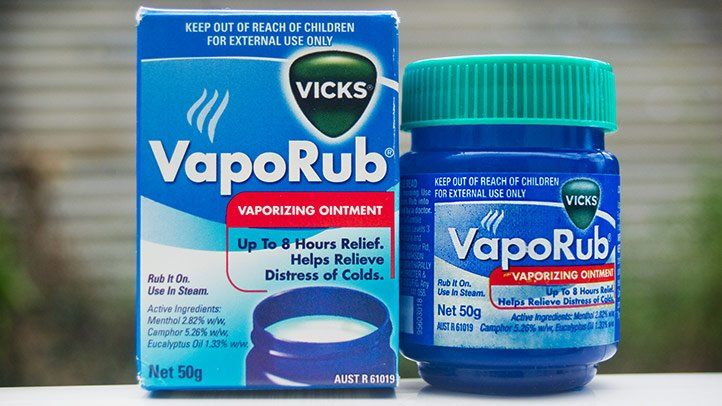Worried about FluMist side effects? You're not alone. I've had more than a few parents and needle-averse adults take a deep breath before the nasal spray and whisper, "Okay, what's going to happen after this?" Here's the good news: most FluMist vaccine reactions are mildthink runny nose, a scratchy throat, maybe a little coughand they usually pass within a few days. Serious reactions are rare. Still, knowing what's normal (and what isn't) can help you feel calm, prepared, and in control.
In this friendly, no-fluff guide, we'll walk through common FluMist side effects, who's more likely to notice them, the red flags to watch for, practical at-home care, and how it compares to the flu shot. I'll share tips I've seen help families in those first 48 hours and how to decide whether FluMist or the shot is your best fit this season.
Quick summary
Let's start with a quick snapshot. FluMist is a live-attenuated influenza vaccine (LAIV) given as a nasal sprayno needle required. Because it's sprayed into the nose, nasal congestion is the star of the show when it comes to side effects. Systemic symptoms like fatigue and headaches can happen too, but they're usually mild.
Most common in kids vs. adults
Side effects look a little different depending on your age. From what both studies and real-world experience show, here's what tends to pop up most:
Kids (217 years): runny/stuffy nose, wheezing, fever, reduced appetite, irritability
Children are champions at getting a "drippy nose" after FluMist. Some may seem a bit crankier or eat less for a day or two. Low-grade fever can appear, and kids with a history of wheezing are more likely to cough or wheeze briefly afterward. Most of this settles within 2472 hours.
Adults (1849 years): runny/stuffy nose, sore throat, cough, headache, muscle aches, fatigue
Adults often report a stuffy nose and mild sore throat, occasionally with a cough. A dull headache, feeling a little "off," or muscle aches are possible. These are usually short-lived and manageable with rest and hydration.
How long do nasal flu vaccine side effects last?
Typical timeline (2472 hours), when to call your clinician if symptoms persist beyond 35 days
If you start feeling symptoms on the day of vaccination or the next day, that's expected. Most symptoms peak within the first two days and then fade. If you or your child still feel unwell beyond 35 daysor symptoms are worsening rather than improvingreach out to your clinician. They may check for other infections (especially during cold and flu season) or recommend next steps.
What's normal after a live-attenuated nasal vaccine vs. a shot?
Because FluMist is sprayed into the nose, your immune system revs up right where many respiratory viruses enteryour nasal passages. That's why nasal congestion, runny nose, and mild throat irritation are common. With the flu shot, you'd be more likely to see arm soreness and local injection-site pain instead. Both can cause low-grade fever, headache, or fatigue, but with FluMist you may "feel it" more in your nose and throat.
Serious risks
Severe FluMist risks are uncommon, but let's be crystal clear about what to watch for. I'd rather you feel prepared than worried.
Red-flag symptoms requiring urgent care
Trouble breathing or wheezing that worsens
If breathing seems difficult, wheezing is getting worse, or your child is working hard to breathe, seek urgent care or call emergency services. This is especially key for kids with asthma or a history of wheezing.
Facial/lip swelling, hives, severe dizziness, anaphylaxis signs
These may signal an allergic reaction. Don't waitcall for emergency help. Anaphylaxis is rare but needs immediate treatment.
High fever, severe headache, stiff neck, chest pain
These are not typical FluMist side effects. Treat them as urgent, especially if they appear suddenly or are intense.
Post-marketing safety signals and how rare they are
Explain "live-attenuated" and why severe illness is still very uncommon
"Live-attenuated" means the flu viruses in FluMist are weakened. They're designed to stimulate your immune system without causing the actual flu in healthy people. Could these viruses cause illness? In people with normal immune systems, that risk is extremely low. Safety has been tracked for years through pre-licensure studies and ongoing surveillance, and serious adverse events are rare. According to large public health reviews and post-marketing data, most reactions remain mild and self-limited.
Reporting a reaction
If you ever suspect a significant reaction, report it. It helps improve vaccine safety for everyone.
How to file, what details to include, and what happens next
In the U.S., you or your clinician can report to the Vaccine Adverse Event Reporting System (VAERS). Include the vaccine name (FluMist), date given, the exact symptoms, when they started, any medications taken (like antivirals), and your medical history (such as asthma or allergies). After submission, public health experts review the reports to identify patterns and safety signals. It's one of the ways we continually verify vaccine safety in the real world. For background on how reports are used, see this overview of vaccine safety monitoring.
Who should avoid
FluMist isn't a fit for everyone. Here's a plain-language guide so you can make a safe choice.
Clear contraindications
Age under 2 or 50+, pregnancy, severe allergy to FluMist components (including egg or gelatin if relevant), prior severe vaccine reaction
FluMist is approved for ages 2 through 49. Kids under 2 and adults 50+ should choose the flu shot instead. Pregnant people should get an inactivated flu shot rather than FluMist. Anyone with a history of severe allergic reaction to a previous dose of any influenza vaccine or to components of FluMist should avoid it.
Children 24 with asthma or recurrent wheezing
If a child 24 years old has asthma or has had wheezing in the past 12 months, FluMist is not recommended. Wheezing risk can be higher in this group, so the flu shot is usually the safer choice.
Precautionsdiscuss with your clinician
Asthma (5+ years) or chronic lung disease, heart, kidney, liver, metabolic disease, immunosuppression, close contacts of severely immunocompromised people, recent antiviral use
For kids 5+ and adults with asthma or chronic conditions, FluMist may still be considered, but it truly depends on your current control and medical history. If you're immunosuppressedor live with someone who's severely immunocompromised (like a stem-cell transplant patient)talk to your clinician. A standard flu shot may be preferred in some situations. Also, recent or planned use of influenza antivirals can interfere with how FluMist works.
Timing with antivirals and other vaccines
How long to wait after oseltamivir/zanamivir/baloxavir; coadministration with other vaccines
Antivirals such as oseltamivir, zanamivir, or baloxavir can reduce FluMist's effectiveness if taken too close to vaccination. As a rule of thumb, clinicians often recommend avoiding antivirals from 48 hours before FluMist through about two weeks after, but your provider will tailor this if treatment is needed. As for other vaccines, FluMist can generally be given at the same visit as most routine vaccines. If you're coordinating multiple shots or sprays, let your clinician know so they can schedule appropriately.
Home care
Here's where we get practical. If you or your child is dealing with nasal flu vaccine side effects, a little TLC goes a long way.
Simple care for nasal flu vaccine side effects
Hydration, rest, saline sprays, humidifier, honey for cough (age-appropriate)
Hydration is your secret weaponwater, warm tea, broth, whatever you enjoy. A cool-mist humidifier at night and gentle saline nasal sprays can ease congestion. For kids over 1 year, honey can calm a coughhalf to one teaspoon works for many families at bedtime. And rest. Your immune system is learning. Give it the downtime it needs.
OTC pain/fever reducers: dosing reminders and safety
Acetaminophen or ibuprofen can help with headache, fever, or aches. Always dose by weight for children, and avoid aspirin in anyone under 19 due to Reye's syndrome risk. If you have kidney, liver, or heart issues, or you're on blood thinners, ask your clinician which medication is safest for you.
When to skip school/work or sports
Fever, significant cough/wheezing, severe fatigue
If there's a fever, rest at home until you're fever-free for at least 24 hours without medication. Skip sports or intense exercise if you're wheezing, short of breath, or wiped out. The goal is to feel better, not power through.
How to reduce risk next time
Pre- and post-vaccine tips; when to consider the flu shot instead
Before your appointment, sleep well, eat balanced meals, and bring a plansaline spray, a favorite tea, and a quiet evening. Afterward, keep the hydration flowing and take it easy. If you had significant wheezing last time or your child struggled more than expected, ask whether the inactivated flu shot is a better fit going forward. Choice is power.
Shot vs. spray
So, how does FluMist compare with the traditional flu shot? The short answer: both aim for the same destinationflu protectionbut the ride feels different.
Which has more local vs. systemic reactions?
Nasal congestion vs. injection-site pain; energy levels, headaches, fever rates
FluMist tends to cause more nasal symptoms (congestion, runny nose), while the shot tends to cause arm soreness or injection-site redness. Both can lead to low-grade fever, fatigue, or headaches in some people. If you hate needles, FluMist might be appealing. If nasal congestion knocks you out every time, the shot might be kinder.
Effectiveness in different seasons and age groups
Why recommendations can vary year-to-year
Vaccine effectiveness can shift with the season's circulating strains, how well the vaccine strains "match," and age-related immune responses. Some years, guidance may tilt toward one option for certain age groups based on emerging data. That's why public health recommendations get reviewed and updated every season, leaning on real-world outcomes and large-scale surveillance.
Choosing what's right for you or your child
Personal preference, needle avoidance, medical history, access
It comes down to your health profile and what matters most to you: needle-free experience, past reactions, asthma control, household risk factors, and what's readily available in your area. A quick chat with your clinician can help you land on the option that balances protection with comfort.
Protect others
One of the reasons I love talking about flu vaccination is that it's not just about "me"it's about protecting our families, classrooms, and communities.
Shedding and transmission: can FluMist spread the virus?
What "shedding" means, practical precautions with severely immunocompromised contacts
"Shedding" means a small amount of weakened virus can be present in nasal secretions after FluMist. For healthy people around you, this isn't a concern. The rare worry is for those who are severely immunocompromised (like someone in a protective environment after a transplant). If you live with or care for someone in that situation, ask your clinician if the flu shot might be safer for youor whether simple precautions (like good hand hygiene and avoiding close face-to-face contact if you're congested) are enough.
Daycare, school, and household guidance after FluMist
Most people can return to normal routines the same day. Remind kids to wash hands, cover coughs and sneezes, and use tissuesbasic etiquette that protects everyone during cold and flu season. If your child has significant wheezing or fever, keep them home until they're better.
Evidence and guidance
Let's ground this in the best available evidence. Recommendations for FluMist come from large expert panels and ongoing surveillancethink clinical trials plus millions of real-world doses each season.
What major guidelines say about FluMist
CDC/ACIP recommendations, age ranges, contraindications
In the U.S., the CDC's Advisory Committee on Immunization Practices (ACIP) reviews data annually and recommends influenza vaccination for most people 6 months and older, with FluMist as an option for ages 2 through 49 who don't have contraindications. Yearly updates reflect what's circulating and what new evidence shows.
Safety data at a glance
Pre-licensure trials vs. real-world surveillance; how risks are monitored
Before approval, FluMist went through extensive clinical trials to establish safety and effectiveness. After approval, safety monitoring continues through systems like VAERS and the Vaccine Safety Datalink, which analyze reports and health records to catch rare events. A large body of data has consistently shown that most FluMist vaccine reactions are mild and short-lived, and serious events are rare.
How to read vaccine safety studies without getting overwhelmed
Absolute vs. relative risk, what "rare" means in numbers
Here's a quick trick: when you see a headline about risk, look for the absolute numbers. "Doubled risk" might sound scary, but if the baseline risk is 1 in a million, doubling becomes 2 in a millionstill very rare. Trusted sources will give absolute rates and compare them to everyday risks you already accept. And keep an eye on sample size and study design; bigger, well-designed studies tell us more than small, isolated ones.
If you love diving into the details, this summary of nasal spray flu vaccine guidance offers plain-language explanations of age ranges, contraindications, and timing considerations.
FAQs quick
Let's tackle a few rapid-fire questions I hear a lot.
Can FluMist cause the flu? Nothe viruses are weakened, so they don't cause influenza in healthy people. You might feel a bit "flu-ish" (congestion, tiredness), but that's your immune system doing its job.
Is it safe for kids with mild colds? Usually, yes. A runny nose without fever or wheezing is often fine. If there's a fever, wheezing, or they're really unwell, reschedule or ask your clinician.
What if my child has asthma? For ages 24 with a history of wheezing in the past year, FluMist isn't recommended. For older kids with well-controlled asthma, it can sometimes be considered with clinician guidance. When in doubt, the flu shot is a reliable alternative.
Can I take antihistamines before FluMist? Antihistamines don't affect vaccine efficacy and can be used if you need them for allergies. Avoid taking antivirals around the time of FluMist unless your clinician advises it.
What if I had side effects last year? Mild side effects don't predict severe reactions later. If last year's congestion or fatigue felt rough, you could try the shot this year. If you had severe symptoms or wheezing, talk with your clinician about the best fit going forward.
Decision checklist
Ready to decide? Here's a quick, human-friendly checklist to guide you.
Your health profile and risk factors
Age, chronic conditions, medications, pregnancy plans, exposure risk
Are you 249 years old? Any history of severe allergy to vaccines or components? Do you have asthma, chronic lung or heart disease, or an immune condition? Are you pregnant or planning to be soon? What's your exposure riskkids in daycare, frontline work, travel?
Preference and comfort
Needle-free option vs. prior reactions
Do you prefer a needle-free option? Did you have nasal irritation previously that you'd rather avoid? What's easier for your childone quick shot or a nasal spray that may cause a drippy nose for a day?
Talk with your clinician
What to ask in a 10-minute visit; what information to bring
Bring your allergy list, medication list (including antivirals), and any history of wheezing or asthma flares. Ask: "Given my history, is FluMist or the shot better this year?" "If I get FluMist, what should I do if I start wheezing?" "How should I time this with other vaccines or medications?"
Closing thoughts
Most FluMist side effects are mild and short-livedrunny nose, sore throat, maybe a low feverannoying, yes, but not long-lasting. Serious reactions are rare. Still, it's smart to know the warning signs and when to call your clinician. If you or your child has asthma, is immunocompromised, or has had a severe vaccine reaction before, talk with a healthcare professional about whether FluMist or the flu shot is the better fit this season.
At the end of the day, this is about balance: protecting yourself and your family from a nasty flu while choosing the option with the fewest downsides for your situation. Have a home-care plan readysaline spray, tea, restand you'll be prepared for the common bumps. What's your experience been like with FluMist side effects? Share your story, ask your questions, and keep the conversation going. We're in this togetherand a little preparation goes a long way.
FAQs
What are the most common FluMist side effects in children?
Kids often experience a runny or stuffy nose, mild fever, reduced appetite, irritability, and sometimes brief wheezing. These symptoms usually resolve within 24–72 hours.
How long should flu‑like symptoms last after getting FluMist?
Typical side effects appear the day of vaccination or the next day, peak within two days, and fade by the third day. If they persist beyond 3–5 days or worsen, contact a clinician.
Can FluMist cause a severe allergic reaction?
Severe allergic reactions (anaphylaxis) are rare but possible. Warning signs include facial/lip swelling, hives, severe dizziness, or trouble breathing. Seek emergency care immediately if these occur.
Is FluMist safe for people with asthma?
For children ages 2‑4 with recent wheezing or asthma, FluMist is not recommended. Those 5 years and older with well‑controlled asthma may receive it, but the flu shot is often the safer choice.
How does FluMist compare to the traditional flu shot regarding side effects?
FluMist primarily causes nasal symptoms (congestion, runny nose, sore throat), while the flu shot may cause arm soreness, redness, or swelling. Both can cause mild fever, headache, or fatigue.
Disclaimer: This article is for informational purposes only and does not constitute medical advice. Always consult with a healthcare professional before starting any new treatment regimen.
Related Coverage
Learn about potential side effects and risks of mixing Nyquil cold medicine with the antibiotic amoxicillin. Discover safer alternative cough remedies to use while on antibiotics....
Learn the correct pronunciation of mucus (myoo-kuh s) and discover what causes excess mucus production, key symptoms, and possible treatment options....
Taking NyQuil and Afrin nasal decongestant simultaneously is generally safe for healthy adults if proper dosage limits are followed. But side effect risks warrant consideration....
Learn how using ice packs can bring safe, soothing relief for painful sinus pressure and headaches. Get tips on proper ice pack use to reduce swelling....
Want to buy Actifed for colds without a prescription? Understand age limits, purchase quantities, ID requirements, and tips to easily get Actifed over the counter....
Learn about the ongoing debate over just how effective Vicks VapoRub really is at treating coughs and colds. Get the facts on ingredient safety concerns and tips for proper usage....
If you find the bitter medicinal taste of NyQuil unpleasant, discover tips to make it more palatable. Compare it to DayQuil and learn about safer natural cold remedies....
Can you take Alka-Seltzer Plus and Mucinex at the same time for cold and flu relief? Find out about safety concerns like acetaminophen overdose and decongestant interactions....
Looking to quiet an irritating cough that's keeping you up at night? Try these soothing home remedies like humidifiers, throat lozenges, steam showers, and more to finally get some sleep....
Ginger cuts candy strikes the perfect balance of ginger heat and sugar sweetness for a uniquely warming, aromatic taste loved by many today as nostalgic childhood candies....








